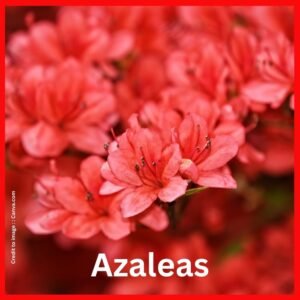The phrase “Acidic Ocean” describes a growing environmental concern where our oceans are becoming more acidic over time, mainly because they’re absorbing too much carbon dioxide (CO₂) from the atmosphere. As human activities emit more CO₂, the oceans, which act as carbon sinks, absorb about 25–30% of it, leading to chemical reactions that lower the pH of seawater. This process, known as ocean acidification, has far-reaching consequences on marine biodiversity, ecosystems, fisheries, and global climate regulation. This article explores the causes, impacts, scientific data, and potential solutions to the growing threat of acidic oceans.
What is an Acidic Ocean?
An acidic ocean doesn’t mean the water is as harsh as lemon juice or vinegar—instead, it means the ocean is gradually losing its natural alkalinity and shifting toward a more acidic state. The natural average pH of ocean water is around 8.1, but due to industrial CO₂ emissions, this pH has decreased by approximately 0.1 units since the Industrial Revolution—a 30% increase in acidity. If current trends continue, ocean pH could drop by another 0.3 to 0.4 units by the end of the 21st century.

How Does Ocean Acidification Occur?
Chemical Process Explained
When carbon dioxide from the air mixes with seawater, it reacts to form a weak acid called carbonic acid (H₂CO₃). This weak acid dissociates into bicarbonate (HCO₃⁻) and hydrogen ions (H⁺). As more hydrogen ions are released into seawater, they reduce its pH level, gradually pushing the ocean toward a more acidic condition.
Chemical Equation:
CO₂ (atmosphere) + H₂O → H₂CO₃ → H⁺ + HCO₃⁻
Scientific Data Tables
Table 1: Change in Ocean Surface pH Over Time
| Year | Average Ocean pH | CO₂ Concentration (ppm) |
| 1750 (Pre-Industrial) | 8.18 | ~280 |
| 1950 | 8.14 | ~310 |
| 2000 | 8.10 | ~370 |
| 2020 | 8.05 | ~415 |
| 2100 (Projected) | 7.8 – 7.7 | 500–1000 (varies by model) |
Vulnerable Marine Species to Ocean Acidification–Table 2
| Ocean Creatures | Ecological Importance | Effect of Rising Acidity |
| Coral Reefs | Habitat for 25% of fish | Reduced calcification, coral bleaching |
| Shellfish (Oysters, Mussels) | Food source, filtration | Weakened shells, lower survival rate |
| Pteropods (“Sea butterflies”) | Food for whales/salmon | Shell dissolves in acidic conditions |
| Plankton | Base of food chain | Calcification stress impacts growth |
Table 3: Regional Impact Projections of Ocean Acidification
| Region | Acidification Level by 2100 | Expected Consequences |
| Arctic Ocean | Highest | Rapid ice melt, collapse of local fisheries |
| Coral Triangle | High | Coral reef loss, fishery decline |
| North Pacific | Moderate | Shellfish industry losses |
| Indian Ocean | Increasing | Biodiversity reduction, socio-economic risks |
Impact of Acidic Oceans
1. Marine Ecosystems in Peril
Ocean acidification disrupts the natural process by which marine organisms form their shells and skeletons from calcium carbonate, making it harder for them to grow and survive. Corals, mollusks, and plankton are among the most affected. This weakens the marine food web and may cause mass extinction of several species.
2. Coral Reef Bleaching and Collapse
Coral reefs are highly vulnerable to the combined stress of rising ocean temperatures and increasing acidity. Acidic conditions slow their growth and hinder their ability to heal, leaving them more prone to bleaching and long-term damage.
3. Economic Consequences
Fishing and aquaculture industries face severe losses. Shellfish farming, for example, is already reporting massive die-offs due to acidic conditions in hatcheries.
4. Threat to Global Food Security
With over 3 billion people depending on seafood as their primary protein source, a collapse in marine biodiversity can directly affect food availability, especially in coastal nations.
Solutions to Combat Ocean Acidification
1. Reduce CO₂ Emissions
The most effective way to stop ocean acidification is to drastically cut fossil fuel emissions. Transitioning to renewable energy and enforcing international climate agreements like the Paris Accord is vital.
2. Marine Protected Areas (MPAs)
Establishing MPAs helps marine species adapt by reducing other stressors like overfishing and pollution.
3. Ocean Alkalinity Enhancement
Research is underway on geoengineering solutions like adding alkaline minerals to the sea to neutralize acidity.
4. Sustainable Aquaculture
Using resistant species, improving hatchery practices, and local buffering of water can protect aquaculture from immediate impacts.
FAQs on Acidic Ocean
Q1. Is the ocean turning into acid?
No, it is not turning into actual acid. It’s becoming more acidic (less alkaline), which still poses major threats to marine life.
Q2. How does CO₂ cause ocean acidification?
CO₂ dissolves in seawater, forming carbonic acid, which releases hydrogen ions and lowers the ocean’s pH.
Q3. What species are most at risk from acidic oceans?
Corals, shellfish, plankton, and pteropods are highly vulnerable due to their reliance on calcium carbonate for shell formation.
Q4. Can ocean acidification be reversed?
If global CO₂ emissions are reduced rapidly and restoration efforts succeed, acidification can be slowed or potentially reversed in the long term.
Q5. Why should humans care about acidic oceans?
They affect marine biodiversity, fisheries, food security, and the planet’s ability to regulate climate—all of which impact human survival.
Summary
The Acidic Ocean crisis is a direct result of unchecked CO₂ emissions, threatening the balance of marine ecosystems and human livelihoods. Its impacts are already being felt—from coral bleaching to fishery disruptions. While the problem is serious, immediate action can reduce future damage. Public awareness, scientific innovation, and international collaboration are crucial in restoring ocean health.
References
- IPCC Special Report on the Ocean and Cryosphere in a Changing Climate (2019)
- NOAA Ocean Acidification Program – https://oceanacidification.noaa.gov
- UNESCO IOC Reports on Ocean Chemistry
- Science Advances Journal, “Regional hotspots of ocean acidification” (2021)
- Nature Climate Change Journal, “Ocean acidification and its potential impact” (2020)
PRAKRITI DARSHAN-NATURE AND ENVIRONMENT MAGAZINE
Prakriti Darshan is a leading Hindi-language magazine and digital platform dedicated to raising public awareness on vital issues related to nature, biodiversity, climate change, sustainable development, and environmental conservation. This magazine represents a unique blend of science, society, and sensitivity—offering a common platform for researchers, students, NGOs, policymakers, nature lovers, and conscious citizens alike.
With thought-provoking articles, inspiring stories, environmental research, impactful projects, and policy perspectives, Prakriti Darshan is a transformative journey toward a greener and more sustainable future.
Let us come together to protect and preserve our planet for generations to come. 🌿🌍
Join us in our mission to protect and celebrate the planet. 🌏💚
Click for more information
- Visit www.prakritidarshan.com for Free Magazine ,Free membership benefits ,offered price magazine @ Rs.1 or Rs.11 only and more ……
- 🎗️Sponsor Prakriti Darshan Magazine – Support our environment mission.
- 📚 Explore the Environment Magazine – Read our latest and past issues.
- ✍️ Read Editor’s Article or Blog – Insightful thoughts from our editorial desk.
- 🌱 Join Membership – Be part of India’s leading green community.
- 🤝 Become an NGO Impact Story Partner – Share your grassroots impact nationwide.
- 🏢 Become a Company Partner – Showcase your CSR, ESG, or sustainability work.
- 👤 Become an Individual Partner – Volunteer, write, and raise your green voice.
- 📢 Advertise with Us – Reach eco-conscious readers across India.
- Eco Trails Newsletter
- Donate for “Hari Ho Vashundhara & Har school Hariyali “ Plantation campaign Associated Partner NGO :GDSS NGO www.gdssngo.org
BALA DATT SHARMA,
MANAGING EDITOR ,
PRAKRITI DARSHAN-NATURE AND ENVIRONMENT MAGAZINE
- Drake Passage: The World’s Roughest Sea Route Between Atlantic and Pacific Oceans - August 22, 2025
- Top 10 Natural Parks in the USA: Biodiversity, Geography & Global Relevance - August 21, 2025
- Exploring the Best Natural Parks in USA: Biodiversity, Sustainable Tourism, and Role in SDGs - August 21, 2025





